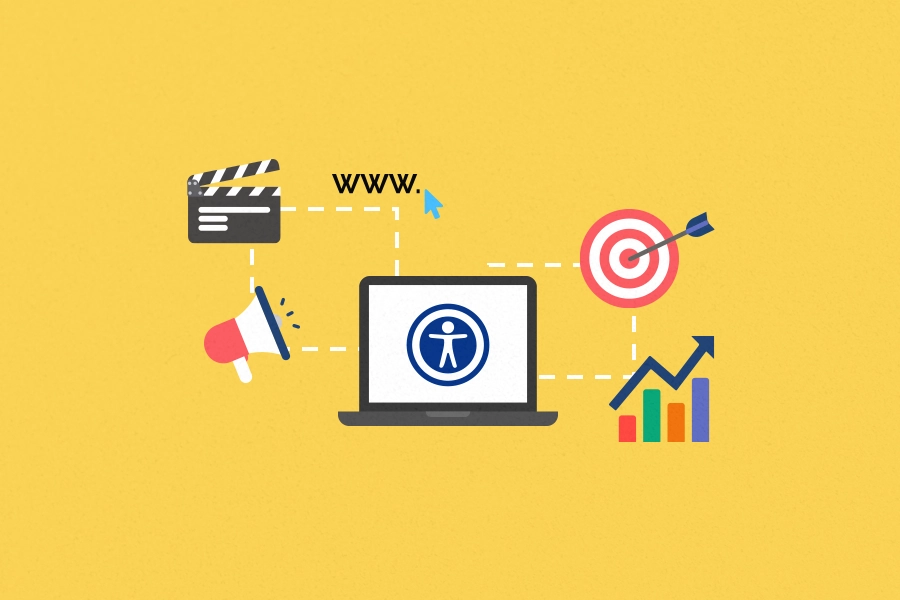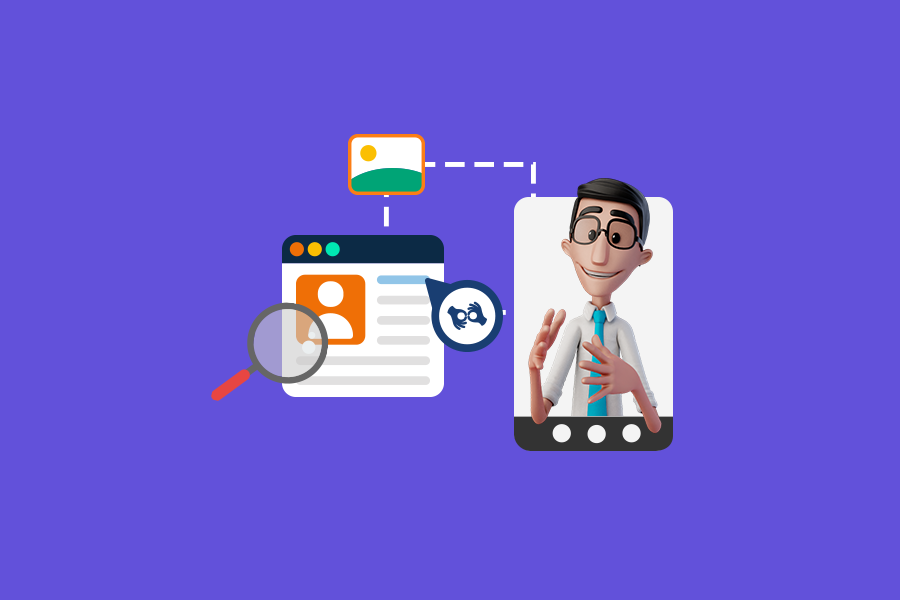
Digital Accessibility: Inclusion as an ally for SEO

We can agree that the internet is quite a vast and diverse space, right? In it, people from different backgrounds, abilities, and needs can search for information, products, and services. Therefore, the priority for digital marketing professionals and webmasters is to focus on search engine optimization, famously known as SEO. It is a fundamental tool to improve the visibility of your websites. On the other hand, there are digital accessibility professionals who seek to make the web more inclusive, allowing all people to access online content, regardless of their abilities or limitations.
But did you know that these areas are deeply interconnected? It may not be obvious at first to realize the profound intersection between accessibility, inclusion, and SEO, but they all have a common goal, even if their motivations are slightly different. So, how about delving into how digital accessibility can be an ally for SEO practices? Let’s go!
The intersection of SEO and accessibility
The intersection between SEO (Search Engine Optimization) and accessibility is often underestimated. While SEO aims to improve the visibility of a site in search results, increasing its organic traffic, digital accessibility focuses on making the web accessible to all people, regardless of their abilities or impairments. In the end, both share a fundamental goal: improving the user experience.
How web accessibility can impact search rankings
When considering accessibility in optimizing a site, several improvements can be implemented that also have a positive impact on search rankings. When a site is optimized with accessibility in mind, it often also improves its visibility to search engines. Both practices together ensure that the content is comprehensive, understandable, and accessible to as many people as possible!
The importance of HTML semantics for accessibility and SEO
The semantic structure of HTML plays a crucial role in both accessibility and SEO. It not only enhances the interpretation of content by screen readers but also helps search engines understand the importance and relationship between different parts of your site. Let’s understand how:
Semantic structure of HTML
The semantic structure of HTML is related to the logical organization of content on a site. By using appropriate HTML tags such as <header>, <nav>, <main>, <section>, and others, you create a clear and understandable hierarchy of information for search engines and screen readers used by blind individuals or those with visual disabilities. This results in more accurate indexing and a better understanding of your site by search engines.
Alternative descriptions for images (Alt text)
Alternative descriptions for images, known as “alt text”, are an essential element for both accessibility and SEO. By adding alt text to all images on your site, you make visual content accessible to people with visual disabilities who rely on screen readers.
Additionally, search engine algorithms cannot “see” images but can read the alternative text, which helps in indexing and ranking content related to these images. It is also an opportunity to naturally include relevant keywords, which can improve positioning in search results.
Descriptive links
Descriptive links are text links that clearly describe the destination of the link. This helps users understand where they will be directed when clicking the link, which is particularly important for those using screen readers. Moreover, search engines use these links as clues to understand the structure of your site and how pages are related to each other. Generic links like “click here” have less value in terms of SEO than descriptive links that incorporate relevant keywords.
Responsive design
Responsive design, which ensures that your site is accessible on different devices and screen sizes, also plays an important role in both accessibility and SEO. Search engines value and prioritize sites that offer a consistent and enjoyable experience on mobile devices and desktops.
Additionally, many users access the web through mobile devices, and a responsive site can improve your retention and satisfaction rate. Therefore, ensure that your site adapts appropriately to smartphones, tablets, and desktops to meet the expectations of users and search engines.
Lighthouse: a suggestion to check your website’s accessibility
A useful tool for assessing your website’s accessibility is Lighthouse, a plugin for Google Chrome. It provides a detailed analysis of your portal’s accessibility and offers improvement suggestions. You can install it from the Chrome Web Store and use it directly on the page you want to evaluate! Additionally, you can access Lighthouse through the “Inspect Element” option in Google Chrome.
Remember that automated digital accessibility tools are a great starting point for reevaluating your accessible initiatives, but they should never replace the work of accessibility experts, right?
Hand Talk and the work of accessibility and SEO
When we started focusing more on SEO actions here at Hand Talk, our goal was always to seek strategies that bring not only visibility but also relevance and value to the end user. Thus, we incorporated principles of digital accessibility, ensuring that the content was understandable and navigable for everyone, regardless of their abilities!
What initially was a strategy to promote digital inclusion also became a powerful tool for optimization in search engines. The result? In addition to the increase in organic traffic, we observed greater interaction and user retention time on our site.
We believe that by making a site accessible, we not only open doors to a broader audience but also improve the quality and structure of content. As you may have noticed, these are factors valued by search engine algorithms as they elevate the user experience, the most important premise in SEO. Inclusion and SEO, therefore, are not just complementary but synergistic!
In summary, digital accessibility and SEO should not be treated as separate entities but as allies in the pursuit of an exceptional experience and positive results in search engines. Want to learn more about how digital accessibility can affect your company’s results? Then be sure to check out the Hand Talk Blog for more information!


